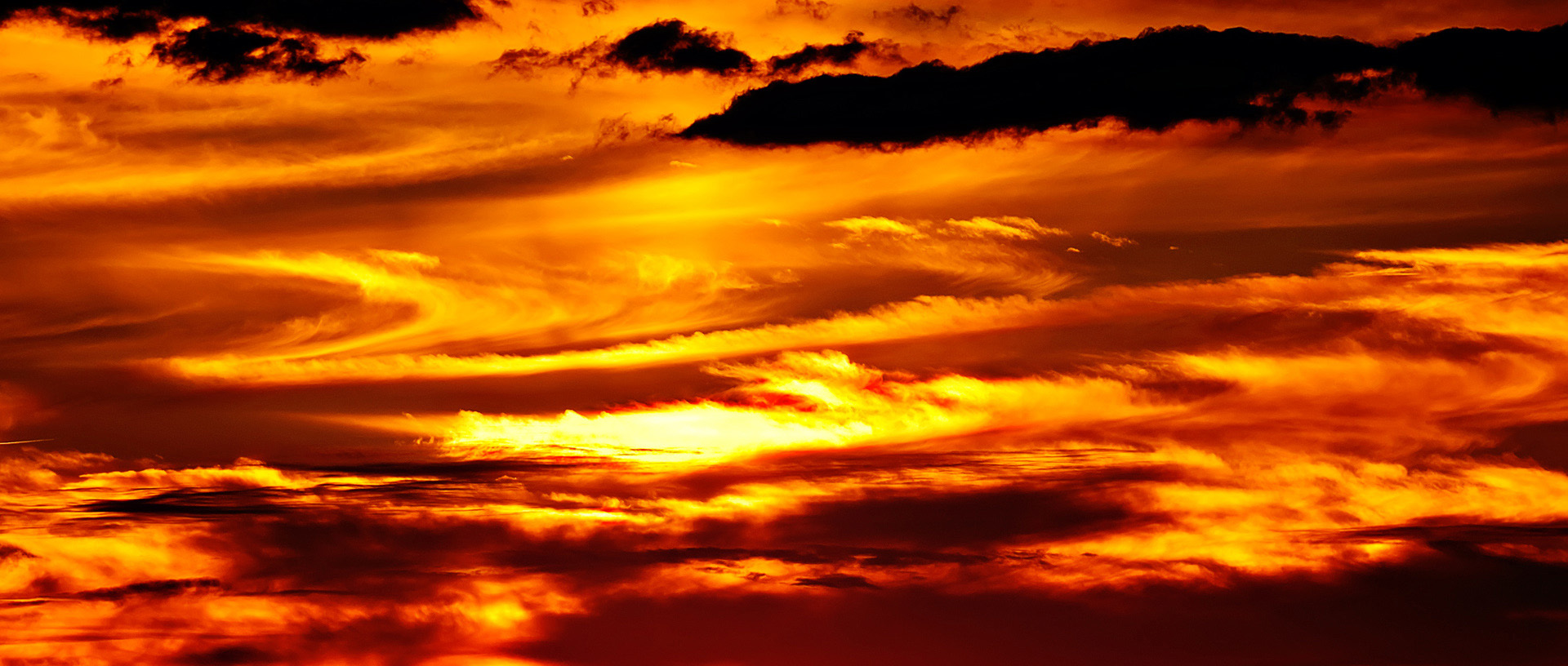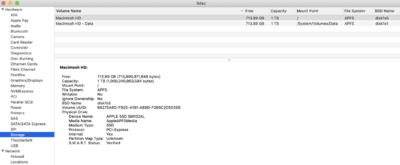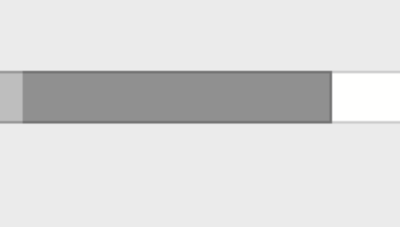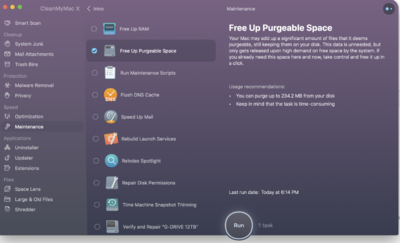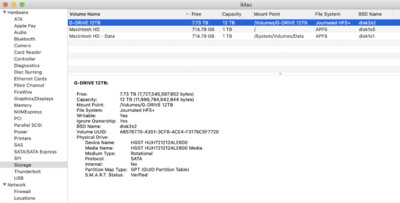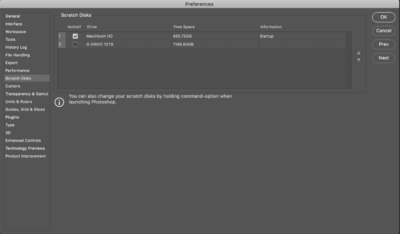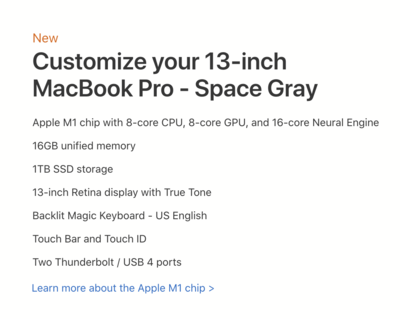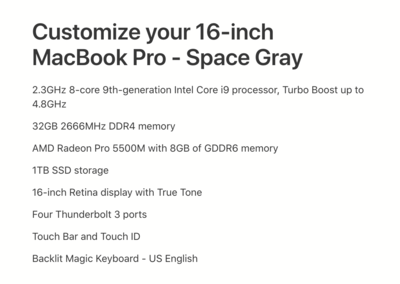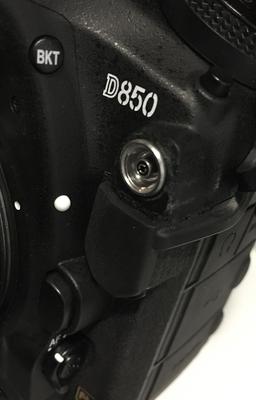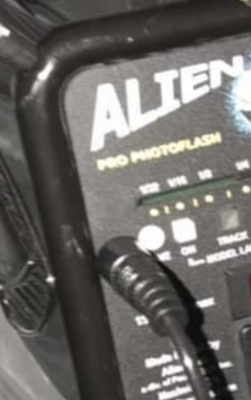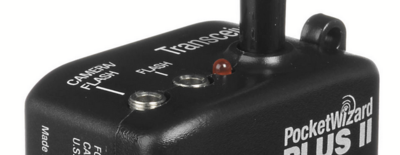-
Posts
4,095 -
Joined
-
Last visited
-
Days Won
50
Everything posted by Brian
-
No. That doesn't tell me anything. I need this: Apple Menu >> About this Mac >> System Report Button >> click Storage in the left column >> post a screenshot here. I'm really interested in the File System Column and what's listed.
-
That’s fine. With a small HD, you need every GB you can get. How much free space are we up to, about 76GB or so? Can you post a screenshot of the storage section under “About this Mac” for me? (Click on Overview and then storage in the left column. Make your screenshot look like mine. I want to see the partition type on the LaCie.)
-
This right here: That's "Other" Space. It's what the OS deems as safe to delete, but doesn't until in needs that area. Often, it never goes away. Did you purchase CleanMyMac X? There is a spot in the Maintenance Section that frees up this area: You probably have another 75GB of space being taken up by junk in this "Other" section.
-
Good. I just emphasized some of my comments above. Be Ruthless. You do not need 75 Raw Photos taken of your Lunch from 5 years ago. CULL-CULL-CULL!!
-
You gotta click that storage section in the left column to see the hard drives. You are just under 18GB free on your main hard drive. THIS IS EXTREMELY BAD. VERY VERY BAD. YOU NEVER EVER-EVER-EVER want to go over than 80% full on ANY Macintosh HD. Once you hit 90%, you are in the Danger-Zone. (...and not the cool Danger Zone like in Top Gun.) In fact, once you hit 95% full or above, your Mac is a ticking Time-Bomb and there is a good chance it will crash and not boot at all. Seriously, once you get that low on space with Macs, it is VERY POSSIBLE that your Hard Drive will start corrupting itself You seriously need to stop worrying about your PS Scratch Disk and FREE UP SPACE ON YOUR MAIN HARD DRIVE. Like, right now. Photoshop is the least of your problems. There is a good chance that your HD is starting to corrupt itself and that's the reason that PS is being stupid. We may have to un-install and re-install Photoshop. But we will cross that bridge later. Please purchase CleanMyMac X and run it. Also go through your Macintosh HD and start deleting stuff. We want our first target to be 75GB free instead of 18GB. The more free space, the better. We will not continue until your hard drive has more free space. It's that serious.
-
Interesting. I want to see what your Mac sees. The Storage Section under "About this Mac" is going to be really what I'm after. How much stuff is on this LaCie Drive? Is it important stuff?
-
In addition, head to your Apple Menu and select About this Mac. Click the System Report, then select storage. Post a Screenshot of that section for me, here is mine: Oh, to so a screenshot where you control what is selected, hit Command + Shift + 4. Then draw a box around the various screens that I want to see. What exact model is the LaCie Drive?
-
-
That's bad. You need that as close to 100GB Free as much as possible. Even if you got around 75GB Free, that would be better. Buy CleanMyMac X from MacPaw and run it weekly. Hit your downloads folder and delete all the crap that is in there. You'd be surprised on how much stuff ends up in there. Cull images. Delete-Delete-Delete the photos that will never see the light of day. With a 200GB Main HD, you need to be hyper anal on what is stored on that drive. How full is the LaCie Drive? How is it connected to your Mac? USB or Thunderbolt? Do you use the LaCie for anything else, like Time Machine?
-

Setting up Second hand desktop....A dilemma
Brian replied to Gingersnaps's topic in The Macintosh User Group
I mis-read your statement. As long as you have signed out of iCloud and even went as far as removing her profile from the Computer, it shouldn't affect anything on her computer. iCloud also has a habit of backing up data, which usually results in people getting error message that their "iCloud is Full." So I think you should be fine. -

Setting up Second hand desktop....A dilemma
Brian replied to Gingersnaps's topic in The Macintosh User Group
The easy answer: Pick a format and stick with it. Macintosh OR Windows. Long Answer: By default, a Macintosh will READ a Windows drive with zero problems, but WILL NOT WRITE TO A WINDOWS DRIVE. This makes it easier for people to switch from Windows to a Mac and is done intentionally. When you go back-and-forth between the two worlds is where things get complicated. You will need special translation software to write to a Windows Format, or have special software installed on your Windows Computer in order to read the Macintosh Format. There is also another partition format called exFAT, but that method isn't 100% fool-proof and I don't recommend it for the general users here. Hell, even * I * don't use it. Of course, if you have two Macs at your disposal, then going back and forth is pretty standard. You could also use a Cloud Service like Dropbox or OneDrive, but that method isn't 100% guaranteed either. Often when you save from your Mac, a Windows computer will give you some sort of error message when you try opening the files. -
Thank You!! FYI: By default, a Macintosh will READ a Windows-based drive without any issues, but will not WRITE to it without help. This is what trips people up. You'll just need to download the Crashplan/Code 42 Software that is meant for the Mac, and then sign in / download / sync stuff. The one thing I'm not sure is going back and forth between the two worlds. It could turn out that Crashplan is impartial and doesn't care, which if you think about, makes things really easy. If not, I'd download all your files to your new Mac and then create new folders with Crashplan and sync things up. Of course, hopefully the support team from Crashplan can answer these questions or point you to a FAQ Answer. Oh, I'm sure you saw this, but here it is anyway: Quick and Dirty iMac Desktop Configurations
-
You can find it on Amazon: Crucial 64 GB Kit Or look for a OWC equivalent: OWC 64GB Kit I'm sure your next question is "Which one?" It doesn't matter. Both are good. OWC has been making Mac Stuff since the 1990's (or late 1980's) and it's $300. YES. Apple makes it EXTREMELY EASY to go from a Windows Machine to a Mac. It's when you want to go back and forth between a Mac and Windows Computer is where things become a pain in the ass. My recommendation: Pick a format and stick with it. Mac OR Windows.
-
@Kim with the pink hair: I just saw this article: https://www.macrumors.com/guide/14-inch-macbook-pro/ I'd hold off buying anything for a few months. It looks like Apple is going to release an update to the M1, probably in the Spring.
-
Yeah, it doesn't look like it woke up last night. You also want to make note of the day/date that it woke up. If this happens every Tuesday or early Wednesday Morning (2:00AM,) it could be Windows Update checking the Microsoft Servers since patches are typically released on Tuesdays. Also, if you want dead silence and are determined to keep using this laptop, you might have to upgrade/replace the Hard Drive with a SSD model. In addition to the CPU fans, you have a rotating disks in the HD and that motor can get loud.
-
If you are buying a Mac Laptop, you are going to be spending a lot of money. Apple wants you to "Go Big or Go Home" now more than ever! Yes, you want 16GB at a minimum with today's technology. Unfortunately, with the current Mac Laptop products, the RAM is soldered to the motherboard, which means YOU CAN NOT UPGRADE AFTER THE FACT!! So you are forced to purchase the extra RAM and pay Apple's extremely over-priced components. Personally, I don't think it's a good idea to purchase the current M1 13" Mac Laptops. Sure, the lower price-point is comforting, but I don't like how the Video doesn't have its own dedicated Video RAM, it's shared with the main RAM so it's more important to max out the RAM at the time of purchase. (In this case, it looks to be only 16GB.) Adobe's products rely on the Video Processor and dedicated Video Memory for a performance boost. Content Aware and the Liquify Tools are two things that use the Video Card and Video Memory to work. Often, you will see Photoshop act weird when it doesn't play well with the video drivers. When you disable Photoshop from using the Video Card to "fix" the problem, these two tools have a bit of lag to them. Here is how I would configure a M1 Macbook and it works out to $1899, plus AppleCare and Tax: As with my normal recommendations when it comes to a "Laptop that is good for photo editing..." you do not want to skip on the RAM or Main HD capacity. 16GB RAM at a Minimum 1TB Main Hard Drive at a Minimum These are non-negotiable. "But that costs...." I don't care, save up for another few months. Again, you can't upgrade these things after the fact. If you need more RAM, HD space or whatever, you are buying another (and more expensive) laptop. Bottom Line: If I had to purchase a MacBook that is "Good for Photo Editing," this is what I would buy: Of course, this is at a much higher price-point, $3299 plus AppleCare and Tax, but should last you for awhile and give you the least amount of problems over the years. With cameras, even entry-level ones, being 24MP or greater, 100MB Raw files are becoming the norm. So even though the M1 might work for you now, you may regret your purchase in a few years when you replace your camera body. Something to think about.
-
Now this is a unique problem. I usually get questions (in real life) to make sure a device doesn't go to sleep, you are the direct opposite. The short answer is, I have no idea. I did find this article: How to Stop Your Computer From Randomly Waking Up From Sleep Mode. I also found this article: What to do if your laptop wakes up from sleep on its own. I'm thinking it might be some sort of scan from virus software, possibly Windows update running, even the manufacture's software that is looking for driver updates. If you are running a Cloud Service, it could be doing a maintenance cycle from there and looking to sync things. Basically, it can be anything. Even a external HD or another device that is plugged into it. If your laptop is configured for DHCP, I'm wondering if the lease time is expiring and the laptop is hunting for a new IP address? (My thinking, if this is happening, the WiFi Adapter is waking up the system, but this is a long shot. Again, I'm just throwing things out there as I think of them.) If you are familiar with the Command Prompt I want you to try this: Click the Start Button Immediately type CMD (Just start typing, don't worry about putting anything into a search box.) Now, this is the important step, the Command program should appear in the list, if you see it, great...but the important thing is to look towards the right column and look for "Run as Administrator." If you don't see Run as Administrator in the right column, that's OK, just simply right-click on the Command Program in the Start Menu and select Run as Administrator. I don't care how you accomplish this, just make sure the Command Window is opened with elevated privileges. (Yes, even though you might be logged in as an Administrator, you still need to do this.) Once the Command Prompt Box appears, type: powercfg -lastwake. If you are lucky, something obvious will appear. If not, you are going hunting for a solution. If you'd like, I want to see what powercfg comes up with. Post a screenshot here with the results. (You can use the Snip-It Tool.) Maybe we can put our heads together in figuring out what is causing this issue. Oh, type exit and hit enter to close the Command Window Box. Edit: You might have to wait to do the powercfg -lastwake command after it wakes up during the night. I know this sucks as you want to get a full night's sleep, but we need to figure out WHAT is causing the issue, and that needs to be done just after it happens. The good news is, if it's obvious, we can form a plan of attack.
-
Personally, I like having the same OS for the Time Machine, but if it’s a Mojave TM drive, it should also work fine. You can use the method that you have in the past, OR you can take this time to set things up manually and have a fresh start. For transferring data, a Thumb-drive or EHD is probably the easiest. You can also network the two Macs and transfer stuff over the network.
-

Are Gaming Laptops reasonable for photo editing?
Brian replied to Gretchen's topic in The Windows & PC Hardware Forum
The hardware installation is the easy part. It’s the cloning of the existing drive is the hard part. This is a normal procedure and isn’t out of the ordinary these days. For peace of mind, backup anything important that is on your main drive this weekend. Stuff you can’t live without. That said, if everything goes smoothly as I’m predicting, you will have nothing to worry about. -
OK, there are a few things when it comes to Flash Photography. There are two main rules: Rule #1 Aperture Relates to Flash Power Shutter Speed (and ISO) Relates to Ambient Light. Your camera's built-in meter will be completely worthless when you use your Alien Bee. Gone are the days of you using 1/1000th and f/2.8 (or whatever.) Well, at least one of those things. The reason is that it is a Passive Meter and not an Active one. "Huh?" Your camera's meter takes a reading of the ambient (existing) light entering the lens, since the Flash hasn't fired yet so the Camera's Meter has no idea what a "Proper Exposure" is when the flash goes off. To compensate this, Camera Manufactures invented something called TTL, or Through The Lens metering. Which is a fancy way of saying that the camera's software has a built in database / Algorithm of what is a "Proper Exposure" when flash is used. It then uses this info and takes its best educated guess on what Flash Power to use. Sometimes it works, sometimes it doesn't. Since you are using Pocket Wizards and this setup is a Manual one, you do not have this Luxury. But don't sweat it, it's not a big deal when you get the hang of things. The first thing we need to do is set the Shutter Speed on your Camera. Most Camera Bodies have something called a "Sync Speed," which is usually 1/250th or 1/200th of a Second. Unfortunately, Alien Bees take a bit to fire and the Sync Speed is a little slower than both of those. I have found that 1/160th of a Second to be the "Sweet Spot" when it comes to Alien Bees. As or the Aperture to use, and how it relates to the power setting on the Bee, I want you to WATCH THIS VIDEO OF ZACK ARIAS EXPLAINING THIS. Rule #2 The Distance between your Subject and Flash will determine your Flash Power. Well, to a certain degree as Modifiers affect the light on your subject. But this is a whole other topic. Anyway, this is called the Inverse Square Law. If you double the distance between your Subject and Light Source, you lose about 75%-ish of the light. Well, it's more like 77%, but I think you get what I mean. From 1 Foot to 2 Feet, you lose 75% of the light. From 2 Feet to 4 Feet, that's another 75% drop in light. (or "Umph" if you want to think of it that way.) From 4 Feet to 8 Feet, you lose another 75%. 8 Feet to 16 Feet, same thing. If you notice, 4 Feet to 8 Feet is a "Typical" area where you would put your flash. It doesn't matter where you put your flash, as long as you stay in the 4-8 feet range, your flash power remains the same. Think of your area that you are using your flash as a big dart board laying on the ground. Your Subject sits in the Center, which is the Bullseye, and the Rings that stretch outward are where you put your flash. If you put your flash on the left or right or in front of you, as long as the distance between the subject and Bee is the same, you use the same Flash Power. For example, you find that putting your Alien Bee 6 feet away at a certain position, you are at 1/4 Power and that is f/5.6 on your camera. You want to kill as much ambient light on your camera, so you set it to 1/160th and ISO 100. As long as the distance is the same, you can move that Bee anywhere around your subject and no settings will change. Make sense? If you want to increase the Ambient Light to include more of the environment around your subject, you either slow down the Shutter Speed or increase the ISO. At this point you will probably think, "...but when I shoot at 1/60th or 1/125th, my photos come out blurry due to camera shake! Can I use a faster Shutter Speed?" The short answer is "No." The reason is, the faster you go, like 1/500th or whatever is you will catch the camera's Shutter Curtain in the shot, which looks like solid black bars in your photo, either along the top or bottom depending on what shutter curtain got in the shot. (There are two, a top and bottom, aka “Front” & “Rear.”) So how does one "Freeze" things at slower shutter speeds? This is something called Flash Duration. A flash that has a quicker duration or "Bam!" / "FLASH!" will freeze things better than ones with a slower duration. The reason that I mention this, is the Alien Bees are notrious for having a slower Flash Duration. Think of them like the old movies you probably have seen on TV at one point, the "Watch the Birdy...FOOOMPH!!!" scenes. The light flashes and hangs around for a bit from the Gunpowder going off. That's how an Alien Bee is, the light isn't a BAM! then it's over. It's more of a "Flaaash!" Make sense? You will find this out when you fiddle with things. Now for the other part with Alien Bees, if you change the power for whatever reason, fire the thing off 3-4 times by hitting the test button on the PocketWizard. Why? Because Alien Bees get a little hyper when you make a change and they aren't consistent until after you fire them off a few times. Hotspots are also common with Alien Bees, as their power fluctuates on occasion. How do you fix this? You buy a better light, like the Paul C Buff Einstein 640 or a Profoto Light. But first things first, learn on the Alien Bee and figure out your style and what Modifier that you like to use. THEN you get a better light. Any questions?
-
Yippee!! Now I can help. First things first. It's not going to work with either camera body. Well, at least not now. You see, neither one of your cameras have something called a Sync Port. Here, let me show you what one looks like. If you take a look at your existing cables, you will see the ends have a round connector on them, which matches what is on my D850 (and other camera bodies.) Your cameras do not have this port and that's what is tripping you up. Fortunately, there is a solution. First, you will need a fresh set of AA Batteries for each Pocket Wizard. Then take any plastic protective covers off the top of your Sony or Canon body. (It's where a flash would go.) Then, with the Pocket Wizard Controls / sliders facing you, slide it into the Hot Shoe. Turn on the Pocket Wizard, there should be a little switch on the left side. Second, pick a Radio Channel, 1-2-3-4...it does not matter. The only thing is both PWs need to be on the same channel. If you are shooting with other photographers who also are using Pocket Wizards, make sure you are on different channels. Otherwise you will each trigger the flashes. (This isn't a normal thing, but I like being thorough.) OK, now for the part that is tricking you up! You need to buy one of these Sync Cords! Don't worry, it's only $10.62. What will happen is you will put one of the ends of that cable into your Alien Bee... ...and the other end into the FLASH Port on the Pocket Wizard. DO NOT USE THE "Camera Flash" Port, just the port labeled as "Flash." Of course, your Alien Bee should be powered on and then you will hit the test button on the PW that is hooked up to it. If everything works, the PW should make the flash fire. Then hit the test button on the PW that is mounted to your camera. It should also fire the flash. Now for part 2, which will be in the next comment box.
-

M1 mini (late 2020) monitor disappointment
Brian replied to MichiganHolly's topic in The Macintosh User Group
It just works if you use Apple’s stuff only. As soon as you throw 3rd party to the mix, you are on your own. I’m thinking it’s looking for 4K. Either you are buying a Monitor or you are returning it. It’s not going to be fixed anytime soon if I know Apple. -
Take a look at the pinned threads. Laptop recommendations are very difficult to keep up with as models are replaced every 4-6 weeks. In addition, with COVID hitting and people working from home, laptops are in huge demand right now. I would budget at least $1500-$2000 (or more) for one that is good to edit photos on.
-
Boo-Yah!!
-

M1 mini (late 2020) monitor disappointment
Brian replied to MichiganHolly's topic in The Macintosh User Group
This is a tough one, and I really don’t have any ideas except for one: Have you tried the Genuine Apple Thunderbolt 3 to HDMI or DP adapter? It pains me to recommend that over-priced cable. Other people are reporting the same issue and it looks like a Big Sur problem. The only reason that I recommend the Apple Adapter is to give you ammunition when it comes to Apple; they have a way of blaming everything else than their products. Only other thing I can think of is to use a 4K screen, or borrow one from a friend. I’m curious is if this is a 1080p thing or not.

